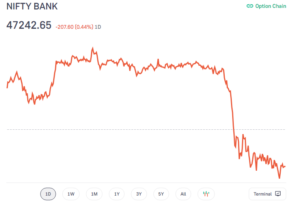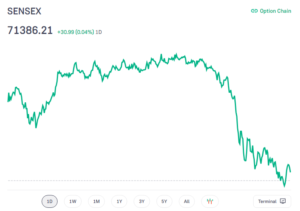
At CFSL in Hyderabad, Amit Shah inaugurates the National Cyber Forensic Laboratory
National Cyber Forensic Laboratory
Home Minister Amit Shah launched the National Cyber Forensic Laboratory’ (NCFL) on the premises of the Central Forensic Science Laboratory (CFSL) in Hyderabad. The NCFL plans to expedite the resolution of cybercrime cases in the country. The Ministry of Home Affairs (MHA) approved the establishment of the NCFL for evidentiary purposes in the CFSL, Hyderabad, in December 2021.
KEY POINTS:
- In a written response, Ajay Kumar Mishra stated that the ministry has approved the establishment of an NCFL for evidential reasons at the CFSL in Hyderabad. The unit’s ability to solve cybercrime cases in a comprehensive and coordinated manner will be enhanced further.
- According to current information, 28 states and union territories have established cyber forensic cum training laboratories.
- On the final day of the month-long ‘Praja Sangrama Yatra’ Phase-2, which started last month on the anniversary of Babasaheb Ambedkar Jayanthi, Union Home Minister Amit Shah will attend a public assembly in Telangana.
- In the first phase, the party campaigned in Hyderabad, Rangareddy, Vikarabad, Sangareddy, Medak, Kamareddy, Sircilla, and Siddipet, covering 19 assembly constituencies in eight districts. The BJP has been projecting its power in Telangana through the yatra.
Important Takeaways For All Competitive Exams:
- Minster of Home Affairs: Amit Shah
- Minister of State in Ministry of Home affairs: Ajay Kumar Mishra
World Telecommunication and Information Society Day 2022
World Telecommunication 2022
The World Telecommunication and Information Society Day (WTISD) is observed each year on 17th May to increase awareness of the benefits and opportunities that the Internet and other information and communication technologies (ICT) provide to nations, societies, and economies. It also hopes to raise awareness about how to close the digital divide.
KEY POINTS:
- Digital technologies for older persons and healthy ageing is the theme for World Telecommunication and Information Society Day this year.
- On a physical, emotional, and economical level, the topic emphasises the need of employing telecommunications and information communication technologies (ICTs) for the elderly to be healthy, connected, and independent.
- Global population ageing will be a distinguishing demographic trend of the twenty-first century.
- However, cultures are still unable to recognise the benefits that this trend can bring.
- Telecommunications and information and communication technologies (ICTs) can assist construct smarter cities, eliminate age-based discrimination in the workplace, assure older people’s financial inclusion, and support carers.
BACKGROUND
- WTISD commemorates the first International Telegraph Convention’s signing and the founding of the International Telecommunication Union (ITU).
- The World Telecommunication Day was established in 1969 to commemorate the founding of the International Telecommunication Union on May 17, 1865.
- The World Summit on the Information Society, however, recommended the United Nations General Assembly to establish May 17 as World Information Society Day in 2005.
- The UN General Assembly decided in March 2006 that WISD would be held every year on May 17th.
- In 2006, the ITU decided to combine the two holidays and name it World Telecommunication and Information Society Day at a Plenipotentiary Conference in Antalya, Turkey.
National Data and Analytics Platform launched by NITI Aayog
The National Data & Analytics Platform (NDAP) was launched by NITI Aayog for free public use. By making data accessible, interoperable, interactive, and available on a user-friendly platform, the platform intends to democratise access to public government data. It houses basic datasets from a variety of government departments, organises them, and provides analytics and visualisation capabilities. This public debut comes after the platform’s beta release in August 2021, which gave a small number of users access for testing and feedback.
To ensure that the datasets hosted on the platform are adapted to the needs of data users from government, academia, journalism, civil society, and the corporate sector, NDAP uses a use-case methodology. All datasets are standardised to the same schema, making it simple to combine them and do cross-sectoral analysis.
ATTENDEES:
- Mr. Amitabh Kant, CEO, NITI Aayog.
- Dr. Anantha Nageswaran, Chief Economic Advisor to the Government of India.
- Mr. Suman Bery, Vice Chairman, NITI Aayog, launched the platform.
and other senior officials from NITI Aayog, various ministries and state governments, academics and researchers.
Sitikantha Pattanaik and Rajiv Ranjan, named executive directors by the RBI
Rajiv Ranjan and Sitikantha Pattanaik have been named executive directors by the Reserve Bank of India (RBI). Rajiv Ranjan was Adviser-in-Charge of the Monetary Policy Department and Secretary to the Monetary Policy Committee before being appointed to executive director. Pattanaik was an adviser at the Department of Economic and Policy Research before being appointed to ED.
Rajiv Ranjan will oversee the Monetary Policy Department as Executive Director, while Pattanaik will oversee the Department of Economic and Policy Research (DEPR).
Rajiv Ranjan:
Rajiv Ranjan has over three decades of experience in macroeconomic policy and research, covering monetary and fiscal policy, real and external sector economics, and international relations. He’s worked in the Monetary Policy Department, the Department of Economic Policy and Research, the Department of External Investments and Operations, and the International Department at the RBI. For three years, he worked as an Economic Policy Expert at the Central Bank of Oman.
Sitikantha Pattanaik:
Sitikantha Pattanaik has worked in the RBI’s Monetary Policy Department and Department of Economic Policy and Research for the past three decades in the areas of economic research and monetary policy. He spent roughly five years on deputation from the RBI at the Central Bank of Oman.
Mob Lynching in India- causes, impacts and preventions
What is mob lynching?
Mob lynching refers to the act of violence by a large group of people towards a person. Lynching means to kill someone by a group of people, especially by hanging. Mob lynching is an offense against the human body and property which affects people as a society and as an individual. The mob lynching happens because people believe that the victim who did something wrong is not punished by the law properly and people come together to form a mob and take the law into their own hands to punish the victim.
In India, there are several cases of mob lynching and it has been years that our nation has no control over mob lynching. People are so used to taking the law into their hands that mob lynching has become a common problem in India. During mob lynching, most of the people who are not even involved in the mob are injured.
Causes of mob lynching
– Lack of patience: People are impatient over the acts of law and try to punish the victim by assuming that he or she has done the wrong. They do not wait for the law to legally declare him or her as the culprit.
– Biasness- India has faced mob lynching over Biasness for years. Mob lynching occurs based biasness on caste, religion, etc. For example, India has seen mob lynching of Hindus and Muslims.
– Lack of Brisk Justice: People are impatient because the law goes by rules and regulations and does not declare whether the victim is the culprit or not which makes the people angrier and causes mob lynching.
Impacts of mob lynching
- Society– It impacts society positively and negatively. Positively, it shows how society can come together for justice and unity in diversity. Similarly, if we talk about the negative aspect, it creates a sense of minority versus majority. It provokes anger between different castes, classes, and religions.
- Economy– It impacts the economy in both foreign and domestic investment. The economy is affected when internal migration is hampered due to mob lynching.
- Individual– To individuals, it harms physically and mentally. People who get involved in the mob lynching are severely hurt and those who are the reason for the mob lynching also get hurt severely. There is loss of life and property which is against human rights.
Prevention of mob lynching
- To protest against cow vigilance civil society has launched the “NOT IN MY NAME” Campaign.
- Society has launched a National Camp Against Mob Lynching (NCAML), which makes mob lynching a non-bailable offense.
- The spreading of false alarms and false news should be stopped by any kind of media.
South Korea won the Uber Cup 2022, defeating China
After a thrilling final at the Impact Arena in Bangkok, Thailand, Korea stunned defending champions China to capture their second Uber Cup title. Korea fought back from behind twice to deny China a record-extending 16th title in the famous team tournament in a tie that lasted close to 90 minutes apiece.
KEY POINTS:
- In the deciding singles match, Korea’s 46th-ranked Sim Yu-jin faced China’s 15th-ranked Wang Zhiyi, with the final knotted at 2-2. Sim, who turned 23, beat Wang 28-26, 18-21, 21-8 in an hour and 28-minute match.
- After a surprising run in Bangkok, Korea won the Uber Cup for the first time in 12 years. The Asian giants beat India 5-0 to win their group, then defeated Denmark and Japan 3-0 in the quarter-finals and semi-finals, respectively.
- World No. 3 In the first game, Chen was defeated by fourth-ranked An by 21-17. The Korean had a five-point lead early in the second game, but Chen came back to win that game 21-15 and the decider 22-20, despite an ankle injury concern.
- In the second doubles match of the final, Korea’s Km Hye Jeong and Kong Heeyong defeated Ping Huang and Li Wen Mei in straight games, forcing the final to a decider.
World Hypertension Day 2022: 17th May 2022
World Hypertension Day 2022
World Hypertension Day is observed every year on 17th May, to raise awareness and encourage hypertension prevention, detection, and treatment. The major risk factor for cardiovascular disease is high blood pressure and hypertension is known as the “Silent Killer”. The force produced by flowing blood on the walls of the body’s arteries, or main blood vessels, is known as blood pressure. When blood pressure is excessively high, it is called hypertension. Blood pressure is measured as a two-digit figure. When the heart contracts or beats, the first number (systolic) shows the pressure in blood vessels. The second number (diastolic) indicates the pressure in the arteries while the heart is at rest between beats.
Key Points:
- If the systolic blood pressure measurements on two distinct days are both 140 mmHg and/or the diastolic blood pressure readings on both days are 90 mmHg, hypertension is diagnosed.
- Hypertension (high blood pressure) affects over one billion individuals globally and is a leading cause of cardiovascular disease and early mortality.
- Hypertension is disproportionately prevalent in low- and middle-income nations, accounting for two-thirds of all occurrences, owing to rising risk factors in those populations in recent decades.
- Furthermore, almost half of persons with hypertension are ignorant of their disease, placing them at risk of medical problems and mortality that may be avoided.
Hypertension statistics:
- Hypertension, often known as high blood pressure, is a dangerous medical condition that raises the risk of heart, brain, kidney, and other disorders dramatically.
- Hypertension affects an estimated 1.28 billion persons aged 30 to 79 globally, with the majority (two-thirds) residing in low- and middle-income nations.
- An estimated 46% of persons with hypertension are completely ignorant of their illness.
- Hypertension is identified and treated in less than half of individuals (42 percent).
- Approximately one in every five persons (21%) has hypertension under control.
- Hypertension is a leading cause of death in the world.
- Between 2010 and 2030, one of the worldwide noncommunicable disease objectives is to lower hypertension prevalence by 33%.
History:
- The World Hypertension League (WHL), which is an umbrella organisation for 85 national hypertension societies and leagues, has recognised and inaugurated World Hypertension Day (WHD). The goal of the day was to raise hypertension awareness.
- This was especially crucial since hypertension individuals lacked the necessary understanding. On May 14, 2005, the WHL debuted their inaugural WHD. Since 2006, the WHL has designated May 17 as World Hypertension Day.
- Blood pressures of fewer than 140/90 mmHg are advised for the general population and hypertension patients without additional comorbidities, and less than 130/80 mmHg for individuals with diabetes or chronic renal disease. International and Canadian authorities propose the following cut-off values.
International Airports In India 2022
International Airports In India
India has quickly become one of the most popular tourist destinations in the world. As one of the world’s largest countries, aviation connectivity is critical in supporting the country’s vast tourism economy. The several international airports in India that are now operational connect India’s major cities to important metropolitan locations on most continents. Many international airlines travel to and from India’s various international airports in addition to the many Indian carriers.
Following is the list of International Airports in India
Indira Gandhi International Airport (New Delhi, Delhi)
The principal international airport servicing Delhi, India is Indira Gandhi International Airport. The 5,106-acre airport is located in Palam, Delhi, 15 kilometres south of the New Delhi Railway Station and 16 kilometres from the city centre.
Kushinagar Airport (Kushinagar, Uttar Pradesh)
The Kushinagar International Airport is located in Kushinagar, Uttar Pradesh, India. The airport was granted a licence to operate as a customs notified airport in August 2021, allowing international passengers and Buddhist pilgrims to travel more easily.
Chaudhary Charan Singh International Airport (Lucknow, Uttar Pradesh)
Lucknow, the capital and second largest city of the Indian state of Uttar Pradesh, is served by Chaudhary Charan Singh Airport, an international airport. It is 14 kilometres from the city centre, in the Amausi neighbourhood, and was previously known as Amausi International Airport
Lal Bahadur Shastri International Airport (Varanasi, Uttar Pradesh)
Lal Bahadur Shastri International Airport is an international airport in Babatpur, Uttar Pradesh, India, approximately 26 kilometres northwest of Varanasi. Formerly known as Varanasi Airport, it was renamed in October 2005 after Lal Bahadur Shastri, India’s second Prime Minister.
Gaya Airport (Gaya, Bihar)
Gaya Airport, also known as Bodhgaya Airport, serves Gaya, Bihar, India. This airport is 12 kilometres south of Gaya and 5 kilometres from Bodhgaya, the temple city where Gautama Buddha attained enlightenment.
Sri Guru Ram Dass Jee International Airport (Amritsar, Punjab)
Sri Guru Ram Das Ji International Airport is an international airport located around 11 kilometres northwest of Amritsar, Punjab, India. Guru Ram Das, the fourth Sikh Guru and the founder of Amritsar, is honoured here. The largest and busiest airport in the Indian state of Punjab is Amritsar Airport.
Lokpriya Gopinath Bordoloi International Airport (Guwahati, Assam)
The principal airport of India’s North-Eastern states is Lokpriya Gopinath Bordoloi International Airport, also known as Guwahati International Airport and earlier known as ‘Borjhar Airport.’ It is India’s 12th busiest airport.
Biju Patnaik International Airport (Bhubaneswar, Odisha)
Bhubaneswar Airport, popularly known as Biju Patnaik Airport, is the major airport serving Bhubaneswar, Odisha’s capital city. It is around 4 kilometres south of Bhubaneswar railway station and 6 kilometres from the city centre.
Sardar Vallabhbhai Patel International Airport (Ahmedabad, Gujarat)
Sardar Vallabhbhai Patel International Airport is an international airport in Gujarat, India, that serves the twin towns of Ahmedabad and Gandhinagar. The airport is located near Hansol, 9 kilometres north of Ahmedabad’s city centre. It is named after India’s first Deputy Prime Minister, Sardar Vallabhbhai Patel.
Surat Airport (Surat, Gujarat)
Surat Airport, with a total area of 770 acres, is a customs airport located near Magdalla, Surat, Gujarat, India. In terms of both aircraft movements and passenger traffic, it is Gujarat’s second busiest airport behind Ahmedabad. On June 9, 2018, it received customs airport status.
Vadodara Airport (Vadodara, Gujarat)
Vadodara Airport is an international airport in the neighbourhood of Harni, Gujarat, India, located northeast of Vadodara. After Ahmedabad and Surat International Airport, it is Gujarat’s third busiest airport.
Chhatrapati Shivaji Maharaj International Airport (Mumbai, Maharashtra)
The principal international airport servicing Mumbai, Maharashtra, India is Chhatrapati Shivaji Maharaj International Airport.
Dr. Babasaheb Ambedkar International Airport (Nagpur, Maharashtra)
Nagpur’s international airport, Dr. Babasaheb Ambedkar International Airport, serves the city of Nagpur, Maharashtra, India. The airport is located 8 kilometres southwest of Nagpur in Sonegaon. The airport extends around 1355 acres. In 2005,
Nashik Airport (Nashik, Maharashtra)
International Airport of Nashik Nashik International Airport is located in Ozar, Maharashtra, India, 20 kilometres northeast of Nashik. Hindustan Aeronautics Limited owns the airport and utilises it to develop, test, and build aircraft for the Indian Armed Forces.
Jaipur International Airport (Jaipur, Rajasthan)
The principal airport servicing Jaipur, the capital of the Indian state of Rajasthan, is Jaipur International Airport. According to Airports Council International, Jaipur International Airport was named the World’s Best Airport in the category of 2 to 5 million passengers per year in 2015 and 2016.
Devi Ahilya Bai Holkar Airport (Indore, Madhya Pradesh)
Devi Ahilya Bai Holkar Airport is a customs airport that primarily serves Indore and the surrounding areas in Madhya Pradesh, India. It is located eight kilometres west of Indore and is Central India’s busiest airport.
Dabolim Airport (Dabolim, Goa)
Dabolim The international airport in Dabolim, Goa, India is Goa International Airport. The Airports Authority of India runs it as a civil enclave within the Indian Navy’s INS Hansa naval airfield.
Sheikh ul-Aalam International Airport (Srinagar, Jammu and Kashmir)
Sheikh ul-Alam International Airport, commonly known as Srinagar Airport and Budgam Airbase, is an international airport serving Srinagar, India’s summer capital. The Indian Air Force owns the airport, and the Airports Authority of India runs a civil enclave there.
Imphal International Airport (Imphal, Manipur)
Imphal Airport is a domestic airport in India, located 7 kilometres south of Imphal, the state capital of Manipur. After Lokpriya Gopinath Bordoloi International Airport and Maharaja Bir Bikram Airport, it is the third busiest airport in northeastern India.
Bagdogra International Airport (Siliguri, West Bengal)
Bagdogra Airport is a customs airport in the Bagdogra district of Siliguri in northern West Bengal, India, serving the city of Siliguri. It is run as a civil enclave of the Indian Air Force’s AFS Bagdogra.
Netaji Subhas Chandra Bose International Airport (Kolkata, West Bengal)
Netaji Subhas Chandra Bose International Airport serves the Kolkata Metropolitan Area and is the aviation hub for eastern and northeastern India. It is located in Kolkata, West Bengal, India. It is located about 15 kilometres from the city centre.
Chandigarh International Airport (Chandigarh)
Chandigarh Airport is a customs airport that serves the union territories of Chandigarh, Punjab, and Panchkula, Haryana. The airport runway is in Chandigarh’s union territory, whereas the terminal is in the village of Jhiurheri, Mohali, on the south side of the runway.
Rajiv Gandhi International Airport (Hyderabad, Telangana)
Hyderabad’s international airport, Rajiv Gandhi International Airport, serves the Indian state of Telangana’s capital. It is around 24 kilometres south of Hyderabad, in Shamshabad. It opened on March 23, 2008, to replace Begumpet Airport, which was Hyderabad’s only civilian airport.
Kempegowda International Airport (Bengaluru, Karnataka)
Kempegowda International Airport serves Bangalore, the capital of Karnataka, in India’s southern state of Karnataka. It lies roughly 30 kilometres north of the city, near the Devanahalli area, and covers 4,000 acres.
Mangalore International Airport (Mangalore, Karnataka)
Mangalore International Airport is an international airport that serves Mangalore, India’s coastal city. It is one of Karnataka’s two international airports, the other being Bangalore’s Kempegowda International Airport. Mangalore International Airport is Karnataka’s second busiest airport.
Cochin International Airport (Kochi, Kerala)
Cochin International Airport is an international airport in Kerala, India, that serves the city of Kochi. Cochin International Airport, which is located in Nedumbassery, some 25 kilometres northeast of the city centre, is India’s first public-private partnership airport.
Calicut International Airport (Kozhikode, Kerala)
Calicut International Airport, also known as Karipur Airport or Kozhikode Airport, is a major international airport in Kerala, India. It is located in Karipur, in the Malappuram district. Kozhikode, Malappuram, Waynad, and Palakkad are all part of the Malabar area.
Trivandrum International Airport (Thiruvananthapuram, Kerala)
Thiruvananthapuram International Airport, originally Trivandrum International Airport, is a major international airport serving Thiruvananthapuram, Kerala’s capital city.
Kannur International Airport (Kannur, Kerala)
Kannur International Airport serves the North Malabar region of Kerala, the Karnataka districts of Kodagu and Mysore, and the Puducherry district of Mahé.
Chennai International Airport (Chennai, Tamil Nadu)
Chennai International Airport is an international airport serving the city of Chennai, Tamil Nadu, India, and its metropolitan area. It is located in Meenambakkam, 21 km southwest of the city centre.
Tiruchirappalli International Airport (Tiruchirappalli, Tamil Nadu)
Tiruchirappalli International Airport is a major international airport in Tiruchirappalli, Tamil Nadu, India. It’s about 5 kilometres south of the city centre on National Highway 336. It is now India’s 31st busiest airport in terms of passenger traffic and 28th busiest in terms of total aircraft movement.
Coimbatore International Airport (Coimbatore, Tamil Nadu)
The principal airport serving the industrial cities of Coimbatore and Tiruppur in Tamil Nadu, India is Coimbatore International Airport. It’s in the Peelamedu neighbourhood, around 10 kilometres from Coimbatore’s city centre.
Madurai Airport (Madurai, Tamil Nadu)
Madurai Airport is a passenger and customs airport in the Indian state of Tamil Nadu that serves Madurai and its adjacent areas. In terms of passenger traffic and aircraft movement, it is India’s 36th busiest airport. The airport is roughly 12 kilometres south of Madurai City Centre, near State Highway 37.
Veer Savarkar International Airport (Port Blair, Andaman and Nicobar Islands)
Veer Savarkar International Airport, popularly known as Port Blair Airport, is the principal airport of India’s Andaman and Nicobar Islands, located 2 kilometres south of Port Blair.
FAQs
Ques. How many international airports are in India?
Ans. There are 34 international airports in India. The several international airports in India that are now operational connect India’s major cities to important metropolitan locations on most continents. Many international airlines travel to and from India’s various international airports in addition to the many Indian carriers.
Ques. Which is the No 1 airport in India?
Ans. The revered Airports Council International has repeatedly named the Delhi airport, Indira Gandhi International Airport (together with Mumbai’s international airport) as India’s best airport. The Delhi airport is particularly well-known for its numerous international boutiques and restaurants.
Ques. Which is smallest airport in India?
Ans. The Trichy Airport is India’s smallest airport. Tiruchirappalli International Airport is a major international airport in Tiruchirappalli, Tamil Nadu, India. It’s about 5 kilometres south of the city centre on National Highway 336. It is now India’s 31st busiest airport in terms of passenger traffic and 28th busiest in terms of total aircraft movement.
Ques. Which is biggest international airport in India?
Ans. The Indira Gandhi International Airport is India’s largest airport. The principal international airport servicing Delhi, India is Indira Gandhi International Airport. The 5,106-acre airport is located in Palam, Delhi, 15 kilometres south of the New Delhi Railway Station and 16 kilometres from the city centre.
Ques. Which Indian state has most airports?
Ans. Among the available alternatives, Gujarat has the most airports. Gujarat has three military bases, two international airports, nine domestic airports, and two private airports. Two more airports are in the works. Three abandoned airports exist, one of which is used as a flying school.
Indian Government Prohibited the Wheat Export with Immediate Effect
Indian Government has prohibited wheat exports, claiming a threat to food security, partially owing to the conflict in Ukraine and as a blistering heatwave reduced supply and pushed local prices to new highs. Despite not being one of the world’s top wheat exporters, India’s prohibition might drive global prices to new highs, putting a strain on impoverished customers in Asia and Africa. The prohibition would not last indefinitely and might be changed, authorities said during a press briefing.
About the Wheat Export:
- India’s Directorate of Foreign Trade warned that a jump in global wheat prices jeopardised the food security of India and neighbouring and vulnerable nations.
- Wheat prices in India have reached a record high, with certain spot markets seeing prices as high as 25,000 rupees ($320) per tonne, significantly above the government’s minimum support price of 20,150 rupees ($260).
- In April, rising food and energy costs brought annual retail inflation in India to an eight-year high.
- The wheat harvest in India has also been hampered by a world-record-breaking heat wave. Apart from poor harvests, India’s large wheat supplies — a bulwark against hunger – have been depleted by the supply of free grain to 800 million people during the COVID-19 outbreak.
- India’s move comes at a time when global agriculture markets are reeling from Russia’s invasion of Ukraine.
- Ukraine, a renowned global breadbasket, has seen supplies hindered, prompting the Ukrainian agricultural minister to come to Stuttgart to meet with G7 contemporaries about getting the country’s produce out.
- Ukraine exported 4.5 million tonnes of agricultural products every month before the Russian invasion, accounting for 13% of the world’s wheat, 15% of its corn, and half of its sunflower oil.
- However, with Russian warships cutting off the ports of Odesa, Chornomorsk, and others from the rest of the world, the supplies can only move via crowded and inefficient road routes.
Exemption to India’s prohibition on wheat exports:
Only export shipments for which letters of credit were issued on or before Friday will be allowed, according to the official announcement. Furthermore, according to the notification published by the Directorate General of Foreign Trade (DGFT), the government will authorise exports on request from other nations.
Reason behind India’s wheat export restriction:
The Rising food and energy costs have increased India’s annual retail inflation rate to 7.79% in April, a new high. Wheat prices in India have reached new highs as a result of growing inflation, with certain spot markets reaching 25,000 rupees per tonne, much over the government’s minimum support price of 20,150 rupees.








